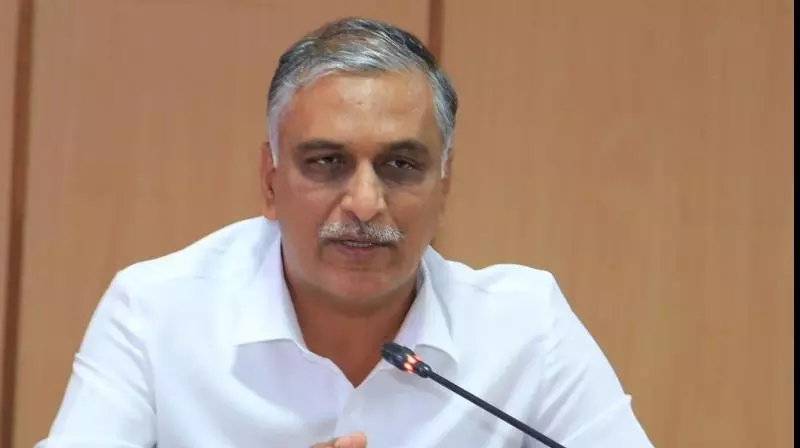Though the Shri Ram Janmabhoomi Teerth Kshetra trust is yet to announce which of the three idols will be placed in the sanctum, many BJP leaders, including former chief minister BS Yedyiurappa and Union Minister of Parliamentary Affairs Pralhad Joshi, claimed Yogiraj’s work has been selected.
Yogiraj, a resident of Mysuru, belongs to a family of famous sculptors. He says his family hs been doing this work for 250 years, or the past five generations.
Who is Arun Yogiraj?
Yogiraj, 38, is counted among the most sought-after sculptors in the country. While he has an MBA degree and even took up a job briefly, he came back to his family profession.
“I have been assisting my father in sculpting since I was 11. After working elsewhere for a few months, I realised sculpting was my passion. I came home in 2008. While my father supported my decision, my mother wasn’t happy that I quit my job. She finally came around in 2014, when I received South India’s young talent award,” Yogiraj said.
His grandfather, B Basavanna Shilpi, was patronised by the kings of Mysore, and had been trained by Shilpi Siddanthi Siddalinga Swami, the royal guru of Mysore palace. Basavanna Shilpi had supplied 64 idols in just 11 months to the Gayatri temple, located on the Mysuru palace premises.
Arun Yogiraj has a team of 15 artisans and some students volunteering to learn the art. Besides orders from India, he has received multiple orders from USA, Malaysia and other places.
He also has trained many students free of cost. He runs Brahmarshi Kashyapa Shilpakala Shala trust in Mysuru, to train children in clay modelling and other skills.
What are some of his famous works?
Some of Yogiraj’s works include a 28-feet monolithic black granite stone sculpture of freedom fighter Subhash Chandra Bose for Delhi's India Gate; a 12-feet Adi Shankaracharya idol for Kedarnath, Uttarakhand; India's largest 10-feet monolithic white marble stone sculpture of Sri Ramakrishna Paramahamsa, Mysuru; and sculptures of Lord Panchamukhi Ganapathi, Lord MahaVishnu, God Buddha, Nandi, Swami Shivbala Yogi, Swami Shivakumara, and Goddess Banashankari installed at various temples across India.
How did he prepare the Ram Lalla idol?
Yogiraj said the Trust had told the three sculptors the idol should look like a five-year-old, and be 51 inch (4.25 feet) in length.
“We were given stones from several places, like Nepal, Karkala in Uttara Kannada district, HD Kote in Mysuru district, and Makrana in Rajasthan. I selected the Krishna Shila stone from HD Kote. Scientists from the department of mines and geology also gave inputs. Some of these stones react to the water and milk which devotees pour. Krishna Shila is a unique stone that does not react to any liquid and has been used in Karnataka for 1,000 years,” he said.
The artist added that while there are references for Lord Krishna (as a child), few such descriptions are availabe about Lord Rama’s childhood. “I visited some schools. There had been a children’s event (Chinnaramela, a summer camp at Rangayana) in Mysuru. I went there to observe children. A five-year-old looks very different from a three-year-old or four-year-old. I tried to capture how a five-year-old looks, working with about 1,200 photos. The idol, along with the innocence of a child, has to have divinity. It took me two months to visualise the idol,” he said.
Over the next four months, he sculpted the idol. “As I was away from home in Ayodhya, I used to work 12 hours a day and after that did some homework for the next day,” Yogiraj said.
The other two sculptors who worked on the idol are GL Bhat of Bengaluru and Satyanarayana Pandey of Rajasthan. The Trust will install one of these three idols inside the sanctum, while the other two will be placed within the premises of the temple.








